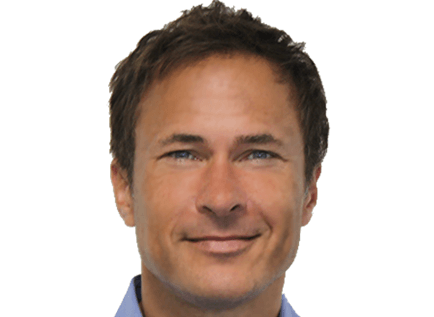My guests on this episode are Jeff Revoy, CEO of Viralheat and Paul Sebastien, Chief Marketing Officer at Deutsche Telekom HBS / T-Mobile. Jeff opens our conversation with a historical review of the challenges all marketers face.
3 challenges for all marketers
– identify the right customers
– target them
– measure outcomes
In the early days of online advertising, ads enjoyed high click through rates. But, the customer funnel has gotten much wider. And, social has added more content, making it harder for brands to cut through the clutter. Additionally, customers might engage with a brand through multiple encounters on multiple devices across 4 or 5 interactions. So, how does a brand find and target the right customer? And, how does the brand measure results?
Deutsche Telekom HBS / T-Mobile faced a common challenge. How do you launch an already crowded VoIP B2B product for a brand that is associated with a consumer product, namely mobile phones. The best way to understand the market landscape and pain points is to go to social media. Viralheat, a social media management and predictive analytics platform, allowed T-Mobile to do social monitoring and listening to learn what was being said around the pain points of VoIP in order to find and target the right customer for a pilot program.
Predictive Social Analytics – Predictive Social Behavior
All marketers have the same 3 challenges (listed above). The noise to relevance ratio has exploded. How does a brand predict when a customer is in the market to buy? Social behavior can be very predictive in life changing events such as getting engaged, having a baby, moving or event attending events such as a concert. Example: people on social media talking about “just got engaged.” This person will be in the market for wedding products/services. Identifying these people when they start talking about this allows brands to start targeting early to establish awareness and preference. Marketing activities such as emails and even direct messages in social media can be employed using targeted and relevant messages to these people when they have the need.
This was the first time T-Mobile was attempting to take such an approach. Paul’s team embarked on comprehensive reach across multiple networks. Targeted keywords were established to determine sentiment about the T-Mobile brand. Additionally, Paul set out to identify customers who are not satisfied with their existing VoIP system. The Viralheat insights were integrated with Salesforce data and other look up data to identify relevant people for a pilot program. Paul intelligently selected a target list that resulted in 500 target customers for a pilot. Paul said “because they are so relevant and engaged, they are more than just customers, they became influencers.”
Another benefit from using predictive social analytics was the ability to understand the vernacular being used by these customers to help shape the messaging in marketing content as well as which social networks to use to engage these people. In short, the predictive social analytics phase was a game changer because it set the stage for a strong pilot and the resulting messaging for the launch.
How can other brands use predictive social analytics?
Social is the place to identify people having conversations. If someone is talking about “moving,” the services they will need will be decided upon before they move. Brands need to mine the social data, attach it to their existing CRM and other data sources to market to them very quickly, before those decisions get made.
As we see in the T-Mobile example, predictive social analytics is applicable in B2B as in B2C. B2B brands build lists and use marketing automation tools to communicate to people. But often people they touch are not ready to purchase. Using predictive social analytics to understand the buyer’s stage in the purchase cycle B2B brands can more effectively find and target the right customers at the right time.
There is a myth that social media is different in B2B because it started in B2C. Social has changed dramatically. People are engaging on social media across many industries. People have conversations on social channels especially with the explosion of mobile devices.
Using predictive social analytics, brands (both B2B and B2C) can understand sentiment and keywords allowing them to test ideas and get closer to the holy grail of delivering more value to your target customer. Context is everything when a person’s real-time need aligns with a marketing message. That is marketing as a service because it’s valuable to the target customer.
Tune into this podcast episode above to hear the entire conversation with Paul Sebastien from T-Mobile and Jeff Revoy from Viralheat, or listen while your mobile via iTunes or Stitcher.



